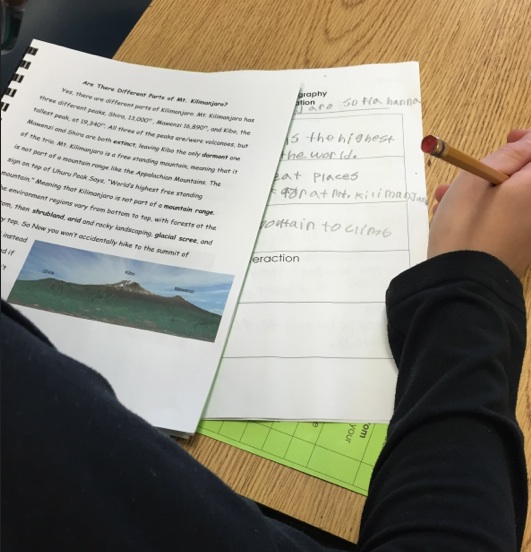During my years of being involved in writing workshop, end-of-unit celebrations have typically involved students reading one of their finished pieces to an audience. I love to be invited to writing celebrations, and I think that offering students the opportunity to share their work gives them an important purpose in their writing lives. This fall, I participated in two celebrations that were slightly different from the classic celebrations I usually see.
Presenting Information Books for Teaching and Learning
Because the purpose of information writing is to teach, I have especially loved the celebrations that put the onus on other students to learn. Our sixth graders learn about the geography of specific places within Tanzania, Brazil, and Australia, and the information writing that they do is in conjunction with this content. Since not everyone researches and learns about the same places, every student has a responsibility to teach classmates about their chosen place. Although students were required to leave compliments on the covers of each other’s information books, as shown in the picture below, those comments addressed only the information writing skills:
In addition to addressing the skills, the students had content sheets to fill out, where they took notes from each other’s books. The notes coincided with what they were learning, and student writers felt great responsibility and pride when their peers used their work as actual sources of information.

Students read each other’s books with great respect, and they developed a much stronger understanding of how information writers fold in facts and details while still engaging readers with interesting writing, pictures, and visuals.
Celebrating the Learning
The second end-of-unit event was different from the typical celebration because it was a celebration of learning rather than a sharing of writing pieces. Necessity is truly the mother of many inventions, and part of the reason for this was that the fifth graders’ narrative pieces were long, and the teacher was concerned about how much time it would take to have every student read his or her piece. In fact, she was thinking about skipping the celebration altogether. I agreed that a celebration could take a long time, but we talked about how it might look different. Maybe students could just share favorite parts, or maybe they could just share with small groups.
Through this conversation, we decided to have students instead write about their learning. I quickly made up a couple of headers on chart paper, and we invited students to write about the learning they could celebrate. Every student in the classroom took this seriously, and they all pored through their writing to find evidence of their learning. They loved hearing about what each other learned, and we were all amazed at how different some of the take-aways were.
The chart is far from beautiful, but the student work and reflections are outstanding. I have included close-ups of reflections from a range of students. I loved that this end-of-the-unit reflection was so differentiated. I also loved that the chart could be disassembled so that every student could reclaim the learning and use it to inspire continued growth in writing during subsequent writing units.
Writing celebrations are an integral part of vibrant writing workshops, and I loved the way these two types of celebrations truly highlighted the teaching and learning that happens within this important part of the day.



